2
marzoWhat's The Job Market For Good Robot Vacuum Cleaner Professionals Like?
The Silent Housekeeper: Finding the Right Robot Vacuum Cleaner for a Spotless Home
In today's fast-paced world, time is a precious commodity. Household tasks, while essential, typically are up to the bottom of the top priority list. Enter the robot vacuum cleaner-- a marvel of modern-day convenience designed to recover your time and keep a tidy home with very little effort. No longer a futuristic dream, robot vacuums have become increasingly sophisticated, efficient, and available, transforming the way we approach floor cleaning.
However with a wide variety of designs flooding the market, navigating the world of robot vacuums can feel overwhelming. What features really matter? How do you choose one that matches your particular requirements and home? This post will explore the key elements of choosing a "good" robot vacuum cleaners reviews vacuum, equipping you with the knowledge to make a notified decision and invite a silent, effective maid into your home.
What Defines a "Good" Robot Vacuum Cleaner?
The definition of a "good" robot vacuum extends beyond simple suction power. It incorporates a mix of aspects that add to effective cleaning, ease of usage, and long-term worth. Here are the essential elements to think about:
1. Navigation and Mapping Prowess:
A robot vacuum's ability to browse your home wisely dictates its cleaning efficiency and coverage. There are numerous navigation technologies used, each with its own strengths:
- Random Navigation: These entry-level designs relocate a seemingly random pattern, bouncing off challenges till the battery runs low. While budget friendly, they can be less efficient, missing areas or cleaning locations multiple times.
- Methodical Navigation (Row-by-Row/Zig-Zag): These robotics tidy in straight, parallel lines, ensuring more systematic coverage. They are normally more efficient than random navigation models.
- Smart Mapping with SLAM (Simultaneous Localization and Mapping): This advanced innovation, often utilizing LiDAR (Light Detection and Ranging) or camera-based systems, enables the robot to produce a detailed map of your home. This map enables:
- Efficient Path Planning: Optimized cleaning routes for faster and more complete protection.
- Zoned Cleaning: Target particular rooms or areas for cleaning directly from an app.
- Virtual Walls and No-Go Zones: Define limits to avoid the robot from going into specific locations, like fragile rugs or pet bowls.
- Multi-Floor Mapping: Some advanced designs can keep maps of numerous floorings, ideal for multi-story homes.
2. Suction Power and Cleaning Performance:
The primary function of a robot vacuum is, obviously, cleaning. Suction power is a key indicator of its ability to raise dirt, dust, and debris from numerous floor types.
- Floor Type Matters: Homes with mostly difficult floorings (wood, tile, laminate) may not need the most effective suction, while homes with carpets and carpets will benefit from greater suction to effectively draw out dirt and pet hair embedded in the fibers.
- Brush Roll Design: The brush roll underneath the robot plays an essential function in agitating dirt and assisting it towards the suction nozzle. Various brush roll designs are enhanced for various floor types. Some feature bristles for carpets, while others utilize rubber blades or a combination for difficult floorings and pet hair management.
- Specialized Features: Look for features like "carpet increase," where the robot automatically increases suction when it finds carpet, and edge cleaning modes, making use of side brushes to efficiently tidy along walls and baseboards.
3. Battery Life and Coverage Area:
Battery life dictates the length of time your robot vacuum can clean on a single charge and, as a result, the size of the area it can cover.
- Consider Your Home Size: Larger homes will need robots with longer battery life. Some designs can run for 90-120 minutes or more, while others may provide 60 minutes or less.
- Auto-Recharge and Resume: Many robot vacuums include auto-recharge. When the battery is low, they immediately go back to their charging dock, recharge, and after that resume cleaning from where they ended. This is particularly beneficial for bigger homes.
4. Smart Features and Convenience:
Modern robot vacuums often come geared up with a series of smart functions that boost their functionality and user experience:
- App Control: Most smart robot vacuums can be controlled via a smart device app, allowing you to:
- Start, stop, and time out cleaning cycles from another location.
- Set up cleaning times.
- Screen cleaning progress and battery status.
- Access maps, set zones, and virtual walls (for mapping models).
- Change suction power and cleaning modes.
- Voice Control Integration: Compatibility with voice assistants like Amazon Alexa or Google Assistant allows hands-free control through voice commands.
- Mopping Functionality: Some robot vacuums are hybrid devices, integrating a mopping function. These typically include a water tank and a mopping pad that drags behind the vacuum, damp-mopping hard floorings.
- Barrier Avoidance: Advanced models use sensing units to discover and prevent obstacles like furniture legs, pet bowls, and cables, minimizing the chances of getting stuck or bumping into things.
- Dustbin Capacity and Ease of Emptying: A bigger dustbin reduces the frequency of clearing. Consider the ease of removing and clearing the dustbin - some are simpler and less untidy than others.
- Filtering System: HEPA filters are beneficial for allergy sufferers, as they trap fine dust particles and irritants.
- Sound Level: Robot vacuums vary in sound levels. If noise sensitivity is an issue, search for designs that are marketed as quieter.
Choosing the Right Robot Vacuum for Your Needs:
Selecting the ideal robot vacuum depends upon your particular home environment and cleaning top priorities. Consider these factors:
- Your Floor Type:
- Predominantly Hard Floors: Focus on models with efficient systematic navigation, excellent suction, and consider a vacuum-mop hybrid for added floor cleaning abilities.
- Carpets and Rugs: Prioritize high suction power, a brush roll designed for carpets, and potentially functions like carpet increase.
- Blended Flooring: Look for flexible designs that carry out well on both hard floors and carpets, ideally with automatic vacuum cleaner and mop floor type detection and suction adjustment.
- Home Size and Layout:
- Apartments or Small Homes: A fundamental model with random or systematic navigation and standard battery life might be adequate.
- Larger Homes or Multi-Level Homes: Invest in a robot with smart mapping, long battery life, auto-recharge and resume, and possibly multi-floor mapping abilities. Consider having multiple robots for various floors or manually moving one robot in between levels.
- Pet Owners: Pet hair is a common cleaning obstacle. Look for robot vacuums particularly developed for pet owners, characterized by:
- Strong Suction: To successfully get pet hair and dander.
- Tangle-Free Brush Rolls: To reduce hair cover and keep cleaning performance.
- Larger Dustbins: Pet hair can rapidly fill dustbins.
- HEPA Filters: To trap pet dander and irritants.
- Budget: Robot vacuum prices vary considerably. Develop your spending plan and focus on functions based upon your needs.
- Entry-Level: Basic cleaning functionality, random or organized navigation, ideal for smaller sized areas.
- Mid-Range: Improved navigation, stronger suction, more smart features, excellent balance of efficiency and cost.
- High-End: Advanced navigation (LiDAR mapping), premium features, exceptional cleaning performance, often with self-emptying dustbins and more sophisticated app control.
Leading Robot Vacuum Brands to Consider:
While countless brands exist, some consistently receive high scores and are known for their quality and performance. Reliable brands include:
- iRobot Roomba: A leader in the robot vacuum market, understood for reliability and a large variety of designs catering to various budget plans and requirements.
- Shark: Focuses on effective suction and innovative brush roll styles, frequently mastering pet hair elimination.
- Eufy (by Anker): Offers a balance of functions and price, supplying great value for cash.
- Roborock: Known for sophisticated technology, particularly LiDAR navigation and thorough app features, often providing high performance at competitive costs.
- Samsung: Integrates smart home technology and stylish styles, best Automatic vacuum Cleaner with models offering good efficiency and features.
- Ecovacs: Provides a variety of models, including those with innovative mopping capabilities and barrier avoidance.
Keeping Your Robot Vacuum:
To ensure your robot vacuum operates efficiently and lasts longer, regular maintenance is essential:
- Empty the Dustbin Regularly: Ideally after each cleaning cycle or as needed.
- Clean the Brush Roll and Side Brushes: Remove hair and debris that can get tangled around the brushes.
- Clean or Replace Filters: Follow producer suggestions for filter upkeep.
- Clean Sensors Clean: Dust and particles can obstruct sensing units, impacting navigation.
- Look for Obstructions: Periodically check wheels and moving parts for any blockages.
Conclusion:
A good robot vacuum is more than simply a device; it's an investment in time-saving convenience and a cleaner, healthier home. By comprehending the key features, considering your specific needs and home environment, and doing a little research, you can confidently choose a robot vacuum that will become your trusted quiet housekeeping partner, releasing you to concentrate on what matters most. Let your robot vacuum take care of the floors, so you can take back your time.
Frequently Asked Questions (FAQs) about Robot Vacuum Cleaners:
Q1: Are robot vacuum worth the investment?
A: For numerous, yes. Robot vacuums offer considerable benefit by automating a recurring chore. They are outstanding for everyday maintenance cleaning, keeping floorings consistently tidier and reducing the requirement for regular manual vacuuming.
Q2: How often should I run my robot vacuum?
A: It depends on your requirements and lifestyle. Daily cleaning is ideal for high-traffic areas or homes with family pets. For less hectic households, running it a couple of times a week might be enough. Scheduling is a great function to automate this process.
Q3: Can a robot vacuum completely change a conventional vacuum cleaner?
A: While robot vacuums are exceptional for daily surface cleaning, they might not entirely change a standard vacuum for deep cleaning tasks, reaching tight corners, or cleaning upholstery. They are best considered as a complement to, rather than a complete replacement for, standard vacuuming.
Q4: Do robot vacuums work well on dark carpets?
A: Some older or less advanced robot vacuums can have problem spotting dark carpets, often misinterpreting them for ledges and avoiding them. However, lots of contemporary designs are designed to navigate dark surfaces successfully. Examine item requirements and evaluations if you have dark carpets.
Q5: How long do robot vacuum cleaners usually last?
A: The life expectancy of a robot vacuum depends upon factors like brand name quality, frequency of use, and upkeep. Usually, a well-maintained robot vacuum can last for numerous years, usually ranging from 3 to 7 years. Battery life might degrade over time and need replacement eventually.



Reseñas